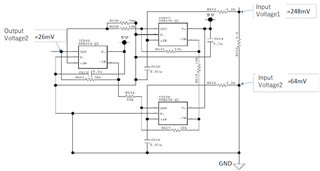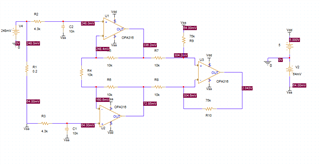Other Parts Discussed in Thread: INA180-Q1
Tool/software:
Hello,
My customer is investigating OPA316-Q1 and they expect the output shown below from the attached schematic, but they got much lower voltage. Would you please tell me what they need to do? Note that the common mode voltage is -0.2V~+0.2V, so the input voltage should be OK.
Expecting output = 10 x (InpVol1 - InpVol2) x (1+2 x (10k/10k)) x (75k/10k)

* In case if the schematic isn't clear enough, R is either of 0.2/4.3k/10k/75k and C is either of 0.01u/0.1u.
Best Regards,
Yoshikazu Kawasaki


